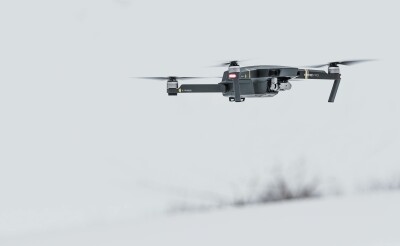Over the past ten days, the world of unmanned aerial vehicles (UAVs) and urban air mobility (UAM) saw an avalanche of good news and positive signals that give us hope that the months ahead are bright for an industry that’s poised to change the world for good. On January 15, the Federal Aviation Administration (FAA) approved the first fully automated, and beyond line of sight (BVLOS), commercial drone flights, granting a small Massachusetts-based company permission to operate UAVs without hands-on piloting or direct observation by human controllers and/or observers.
American Robotics Inc. is the recipient of this historic decision, and the FAA went out of its way to describe the benefits that this technology has to bring when deployed at scale: “efficiencies to many of the industries that fuel our economy such as agriculture, mining, transportation and certain manufacturing segments.”
A few days before, on January 13, General Motors (GM) unveiled its UAM concept car marking the entrance of the automobile behemoth into the world of air taxis and advanced air mobility (AAM). Now that we have aviation manufacturers such as Airbus, Boeing and Embraer working on actual prototypes of their UAM platforms, the debut of a car manufacturer into the mix marks the tacit acceptance that UAM is a perfect blend of car and aircraft for very specific missions aimed at alleviating highway congestion and pollution.
Almost simultaneously, and on the other side of the world, Singapore announced the creation of specific UAV flying areas to increase interest in the activity. According to the Straits Times, the designated location of these areas is still unknown, but the official decree seems to indicate that the decision has been made.
The reason why this announcement is important is that Singapore is the kind of location that would be in a position to ease restrictions and approve applications faster due to its political structure and relatively small geographical size.
And finally, in an area that is more financial than technical, shares of Ehang Holdings Ltd. (NASDAQ: EH) shot up over 100% from $21.51 on January 4th to over $45 on January’s 19th trading. For those of you not familiar with Ehang, they manufacture a UAM designed to never have a pilot on board and has a completely automated approach that is being taking seriously by cities around the world. Perhaps someone knows something we don’t, but shares in a UAM company doubling its share price in less than ten days is certainly news. Ehang market is limited, their production capacity is small, by aircraft and ground vehicles standards, and their ability to populate the skies with hundreds of units is still subject to the availability of an accepted UTM.
In addition, on January 12th Ehang announced it will initiate urban air mobility operations for aerial sightseeing and other air mobility services in the Hengqin New Area in Zhuhai, China. Ehang has been promoting its fully autonomous flights to cities around the world, from Vienna, Austria to Seoul, South Korea.
So, what’s the hype? Investors seem to be placing a lot of stock (no pun intended) in the ability of Ehang to deliver in its promise of fully autonomous and inexpensive, short-haul transportation. But are we ready yet?
The good news is that we are talking about it. Regulators around the world are easing up restrictions slowly but surely, Europe implemented new uniform rules throughout the continent, certifications on non-traditional aerial vehicles in the USA will soon be a reality, and the stock market is taking notice. Perhaps 2021 will finally be the year that we start so see real money being made in our industry.















Comments